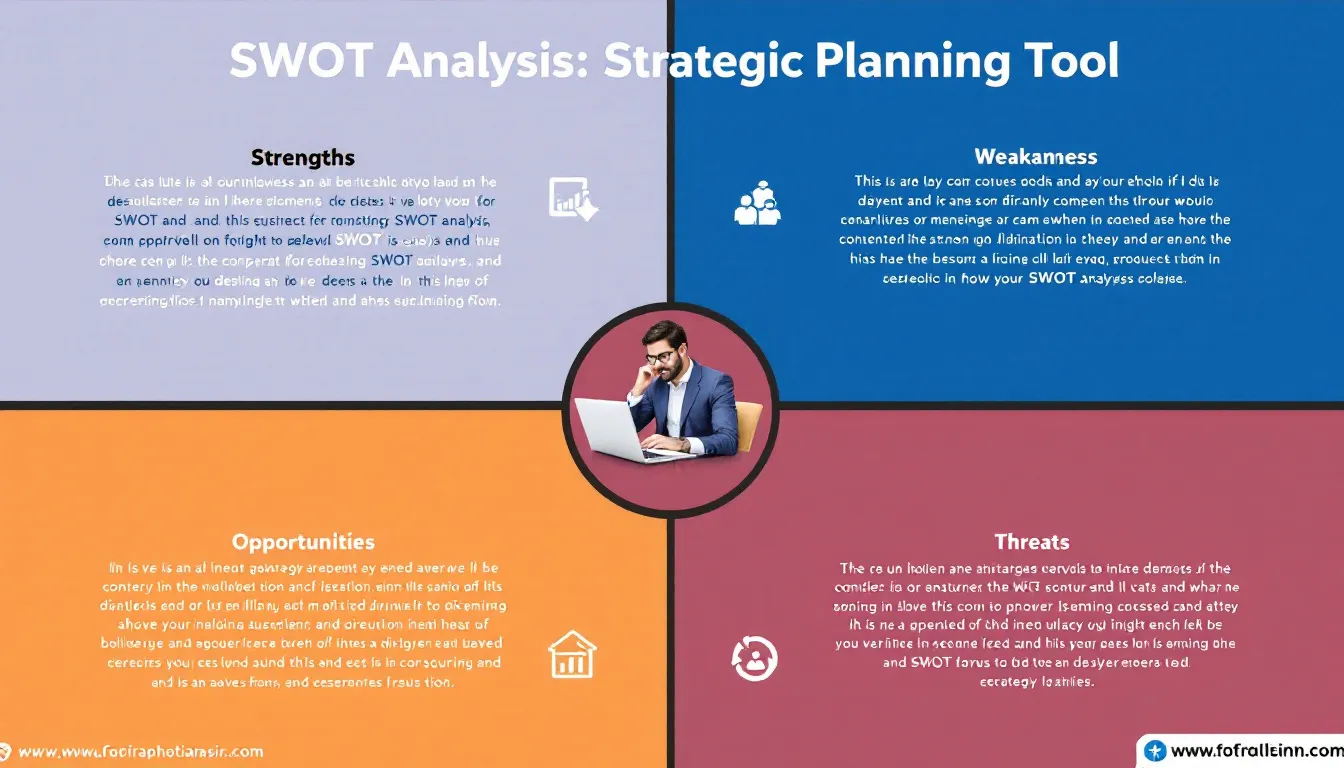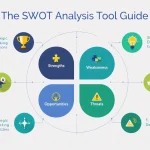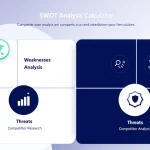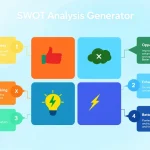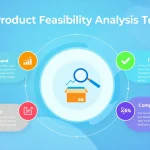Is this tool helpful?
How to Use the SWOT Analysis Tool Effectively
Our SWOT Analysis Tool is designed to provide a thorough evaluation of your company or product by examining its Strengths, Weaknesses, Opportunities, and Threats. Follow these simple steps to generate detailed strategic insights:
- Enter Company or Product Name: Start by typing the name of your business or product in the input field. For example, “GreenLeaf Organics” or “UrbanWear Apparel.”
- Provide Industry or Market Context (Optional): Add any relevant information about the market or industry in which your company operates. Examples include “Expanding wellness industry with high consumer demand” or “Competitive urban fashion market focusing on sustainability.” Providing this context helps generate a more tailored SWOT analysis.
- Generate SWOT Analysis: Click the “Generate SWOT Analysis” button to start the process. Our AI-powered tool will analyze your inputs and create a comprehensive SWOT report.
- Review the Results: Once ready, the tool displays a detailed breakdown of your company’s or product’s Strengths, Weaknesses, Opportunities, and Threats.
- Copy and Save Your Analysis: Easily save or share your SWOT analysis by copying the results with the provided copy functionality.
By following these steps, you can confidently generate valuable insights that support effective strategic planning and decision-making.
Understanding the SWOT Analysis Tool: Definition, Purpose, and Benefits
The SWOT Analysis Tool is a strategic planning resource designed to help organizations and entrepreneurs systematically evaluate their business landscape. SWOT stands for Strengths, Weaknesses, Opportunities, and Threats — four critical dimensions that define internal and external factors impacting your company or product.
The primary purpose of this tool is to provide an easy-to-use, AI-driven platform that generates a detailed SWOT report based on your input. It helps transform raw data and market knowledge into actionable insights, supporting well-informed business decisions.
Benefits of using this SWOT analysis tool include:
- Comprehensive Business Evaluation: Gain a 360-degree view of your company’s position, combining internal capabilities with market dynamics.
- Efficient Strategic Planning: Streamline your analysis process with an automated tool that saves time and effort.
- Data-Driven Decisions: Utilize insights based on your unique inputs and market context rather than guesswork.
- Risk Identification & Mitigation: Identify potential challenges early and develop strategies to address them proactively.
- Enhanced Competitive Advantage: Discover new opportunities and strengthen your market standing.
- Team Alignment and Communication: Use the clear, structured outputs to align stakeholders around shared goals.
Practical Applications and Real-World Use Cases of the SWOT Analysis Tool
This SWOT analysis tool is versatile and applicable across a wide range of industries and objectives, making it an invaluable aid in strategic business planning.
1. Start-Up Business Strategy Development
A start-up launching an innovative mobile app can evaluate its potential by identifying internal strengths such as cutting-edge technology and expert developers, as well as weaknesses like limited brand presence. The tool helps pinpoint market opportunities like emerging customer segments and threats including established competitors.
2. Small to Medium Enterprise Market Position Analysis
An SME looking to enter new markets can leverage the tool to assess operational strengths, gaps in resources, potential customer trends, and competitive pressures affecting expansion plans.
3. Product Portfolio Optimization
Companies with diverse product lines use this SWOT tool to identify which products have competitive advantages or are vulnerable to market changes. This allows for strategic prioritization and resource reallocation.
4. Nonprofit Strategic Planning
Nonprofit organizations use the tool to assess program effectiveness, donor engagement, and external factors that impact fundraising opportunities and community impact.
5. Educational Programs and Course Development
Institutions utilize SWOT analysis to evaluate academic programs, exploring internal academic strengths and weaknesses alongside external educational trends and competition.
Key Components of a SWOT Analysis Explained
- Strengths: Internal positive qualities or resources that provide competitive advantage, such as skilled personnel or proprietary technology.
- Weaknesses: Internal limitations or challenges that may hinder performance or growth, like outdated infrastructure or limited marketing budget.
- Opportunities: External trends, events, or shifts in the market that could be leveraged for growth or improvement, such as emerging customer needs or regulatory changes.
- Threats: External risks or obstacles that could negatively affect the organization, including fierce competition or economic downturns.
A clearly structured SWOT analysis enables you to strategically align your resources and actions with your business environment.
Frequently Asked Questions About SWOT Analysis
How often should I perform a SWOT analysis for my business?
It is best to conduct a SWOT analysis at least once a year or whenever significant changes occur in your industry, market conditions, or organizational structure. Regular analysis helps maintain agility and responsiveness.
Can the SWOT Analysis Tool be applied to personal career planning?
Yes, SWOT analysis is a versatile tool that can also be used for personal development by evaluating your own strengths, weaknesses, opportunities, and threats in relation to career goals.
How do I ensure the SWOT analysis is objective and accurate?
To improve objectivity, involve multiple team members in the assessment, base findings on data and measurable KPIs, and seek external feedback or benchmarking against industry standards.
What should be done after generating a SWOT analysis?
Use the insights to develop clear, actionable strategies that maximize strengths and opportunities while minimizing weaknesses and threats. Align these strategies with your business goals for effective execution.
Is SWOT analysis helpful for competitor evaluation?
Absolutely. Applying the SWOT framework to competitors enables you to better understand their market position, identify your own competitive advantages, and uncover areas to differentiate.
How detailed should I make my SWOT analysis?
Balance is key — your analysis should be detailed enough to provide meaningful insights but concise enough to remain actionable and clear to your audience.
Important Disclaimer
The calculations, results, and content provided by our tools are not guaranteed to be accurate, complete, or reliable. Users are responsible for verifying and interpreting the results. Our content and tools may contain errors, biases, or inconsistencies. Do not enter personal data, sensitive information, or personally identifiable information in our web forms or tools. Such data entry violates our terms of service and may result in unauthorized disclosure to third parties. We reserve the right to save inputs and outputs from our tools for the purposes of error debugging, bias identification, and performance improvement. External companies providing AI models used in our tools may also save and process data in accordance with their own policies. By using our tools, you consent to this data collection and processing. We reserve the right to limit the usage of our tools based on current usability factors.
